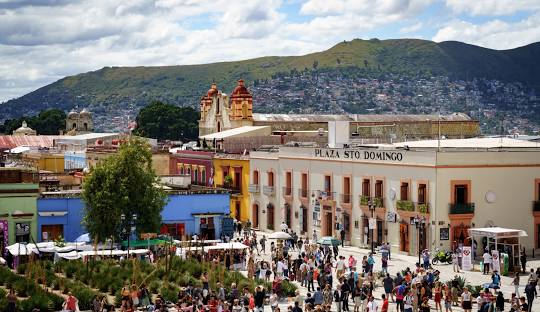In the sun-drenched valleys of Oaxaca, Mexico, a centuries-old tradition thrives through the cultivation and distillation of agave, birthing the renowned Oaxaca Mezcal. This spirit, deeply embedded in the cultural fabric of the region, tells a story of heritage, craftsmanship, and the unique terroir of Oaxaca.
The journey of Oaxaca Mezcal begins with the agave plant, known locally as “maguey.” With over 30 varieties found in the region, each type lends a distinct flavor profile to the mezcal, influenced by the altitude, climate, and soil where it grows. The most commonly used species is Agave angustifolia (Espadín), but artisanal producers also harness the unique qualities of wild agaves like Tobalá, Tepeztate, and Arroqueño to create mezcals with complex flavors and aromas.
Harvesting agave is a labor of love and patience, as these plants mature slowly, taking anywhere from seven to thirty years to reach the ideal point for mezcal production. The heart of the plant, or “piña,” is extracted by skilled workers known as jimadores. These piñas are then cooked, traditionally in earthen pits lined with volcanic rocks, where they are covered with agave leaves and soil, slow-roasting for days. This process imbues the mezcal with its characteristic smoky flavor.
After cooking, the agave hearts are crushed to extract the sweet juices, often using a stone wheel (tahona) pulled by horses or mules, blending tradition with the rhythm of nature. The extracted agave juice is then fermented in wooden vats or clay pots, allowing natural yeasts to work their magic, converting sugars into alcohol. This fermentation stage is crucial, as it develops the mezcal’s flavor and character, influenced by the local environment’s microorganisms.
Distillation is the next step, where the fermented agave juice is heated in copper or clay stills. Oaxaca’s mezcaleros, masters of their craft, oversee the distillation, making precise cuts to separate the head, heart, and tail of the distillate, ensuring only the purest essence of agave makes it into the final product. This process may be repeated to achieve the desired purity and alcohol content.
Oaxaca Mezcal is not just a drink; it’s a cultural artifact, representing the symbiosis between Oaxacan traditions and the natural landscape. Each bottle tells a story of the local community, the biodiversity of the region, and the artisanal methods passed down through generations. Mezcal production in Oaxaca is a sustainable practice, with many producers committed to preserving the biodiversity of agave and supporting local communities.
The global appreciation for Oaxaca Mezcal has grown, highlighting its place in the world of fine spirits. However, at its heart, mezcal remains a tribute to the land and people of Oaxaca. It’s a spirit that demands to be sipped and savored, each drop a reflection of the rich history and vibrant culture of this Mexican region.
In conclusion, Oaxaca Mezcal embodies the essence of its origin, a testament to the harmonious balance between human craftsmanship and nature’s bounty. As the world discovers this exceptional spirit, the traditions and flavors of Oaxaca continue to captivate and inspire, ensuring the legacy of mezcal for generations to come.

